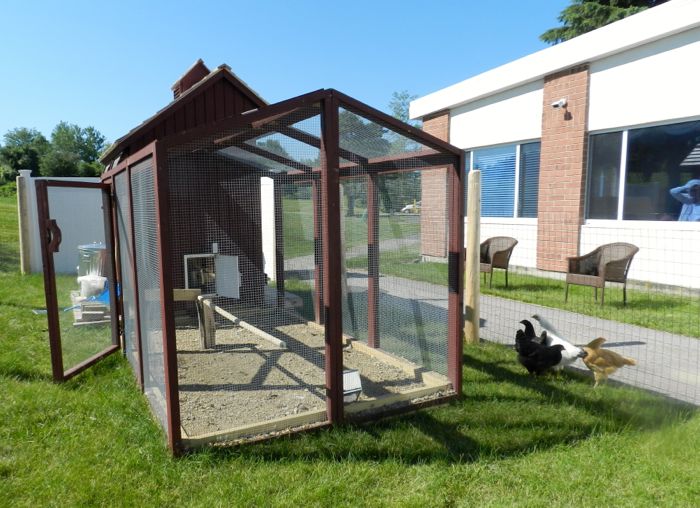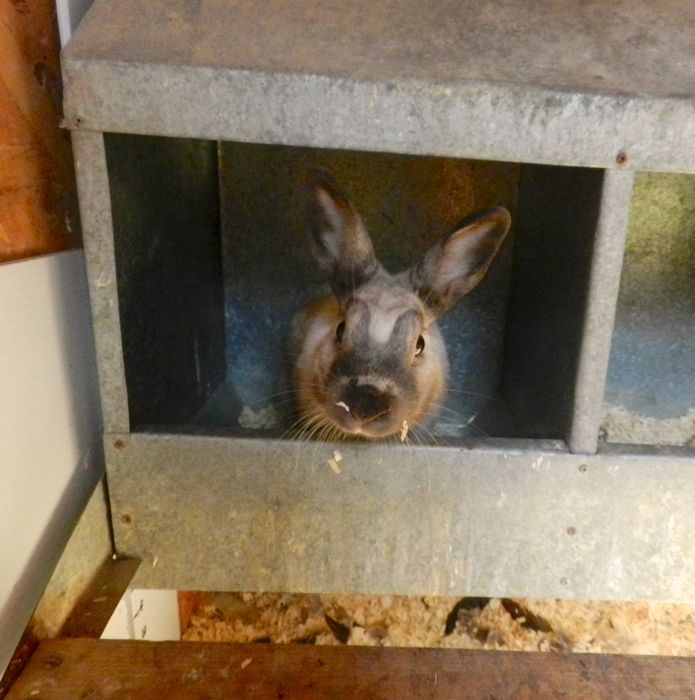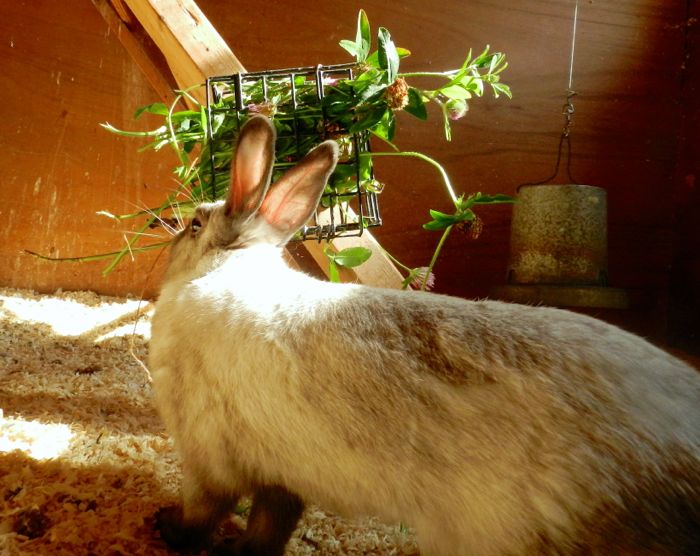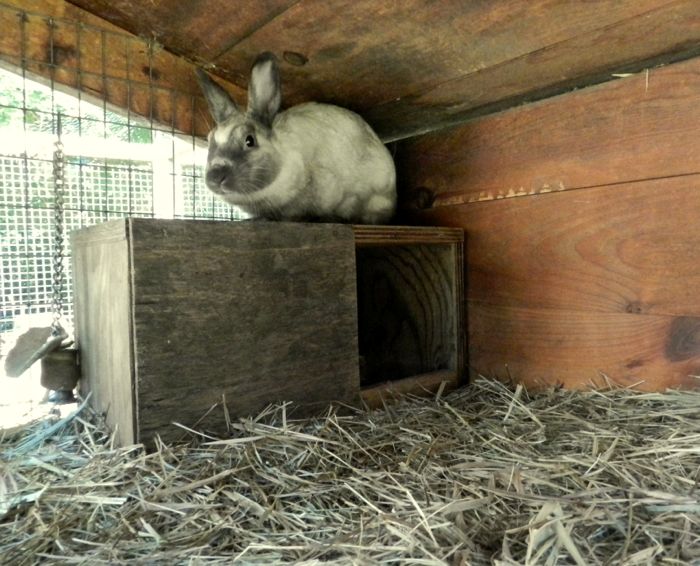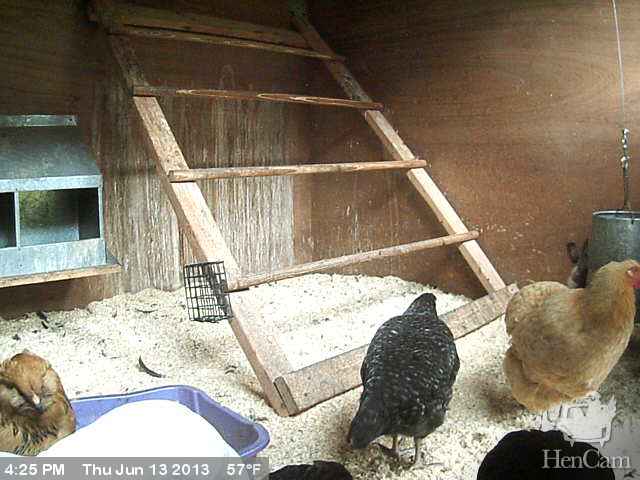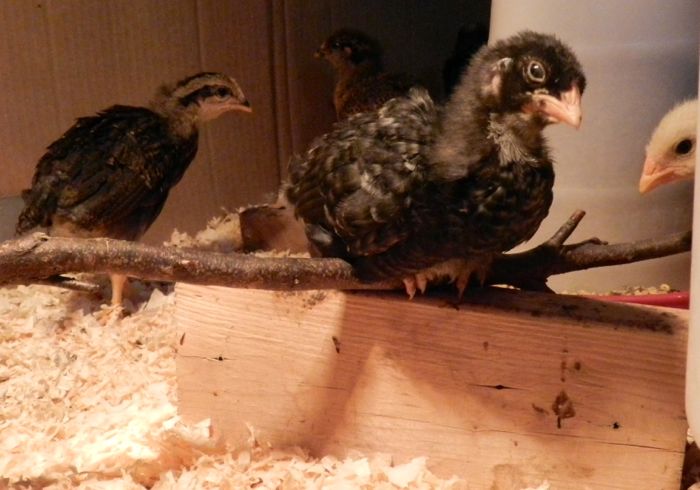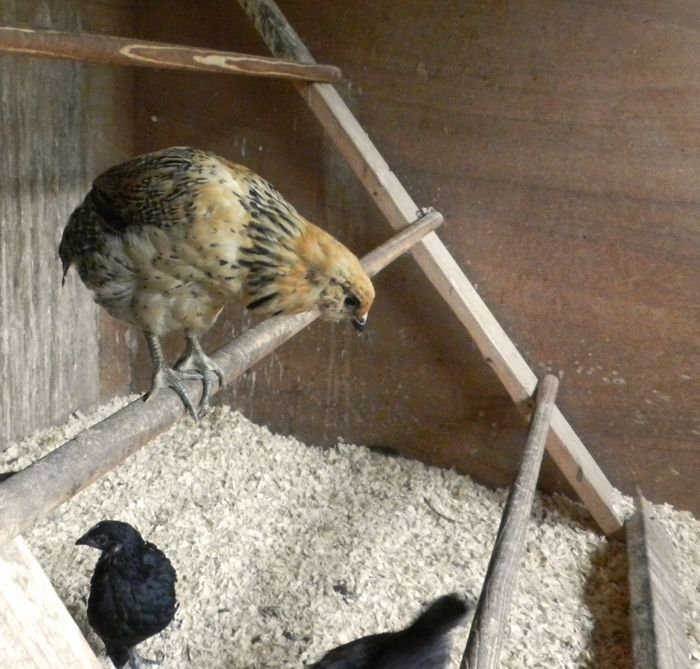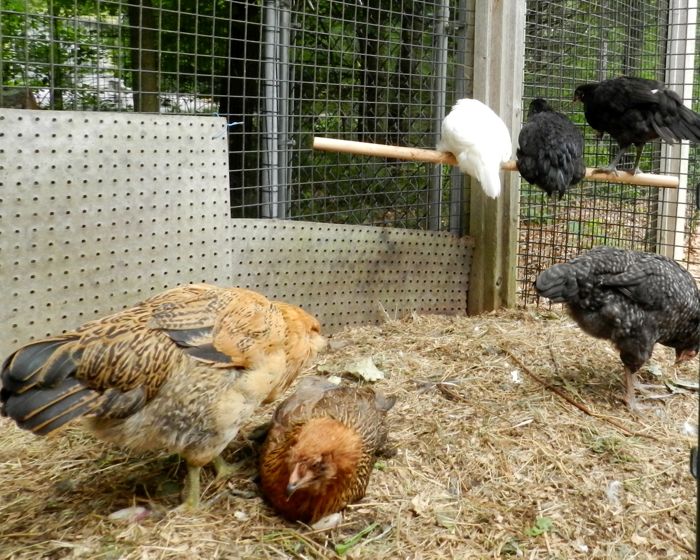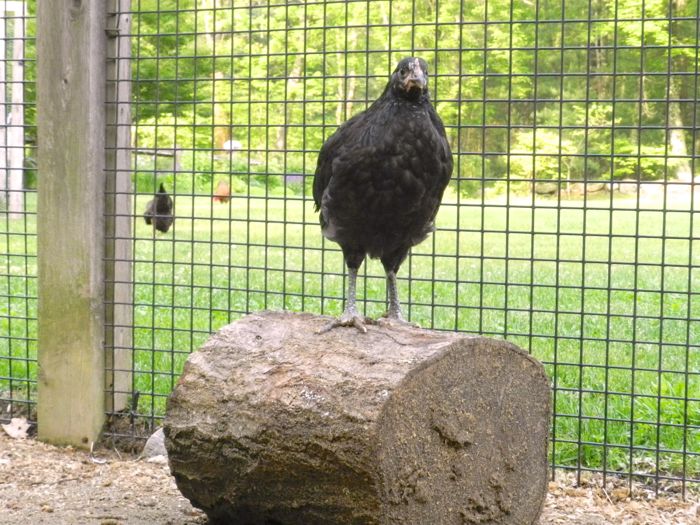The other day, right at dusk, it was pouring rain. It was getting dark and the pullets were still outside. My barn boots have big cracks in them, but I shoved my feet in them anyway. I put on my raincoat. I went into the run and, slipping and sliding in slick muck, I tried to catch the girls and put them inside. I wasn’t successful. All I succeeded in doing was giving them a pre-bedtime bit of exercise. At least I didn’t fall. I gave up, went inside, and changed my now muddy socks, all the while muttering, “fine, get soaked and die.”
Of course, they didn’t get wet to the bone. Or die. Of course, when it was really bedtime, they went right into the coop on their own. I should have known better. I do know better. Chickens will put themselves to bed. You don’t have to do anything.
They don’t all have the same schedule. The Old Girls make their way onto the roost well before the young hens even consider going inside.
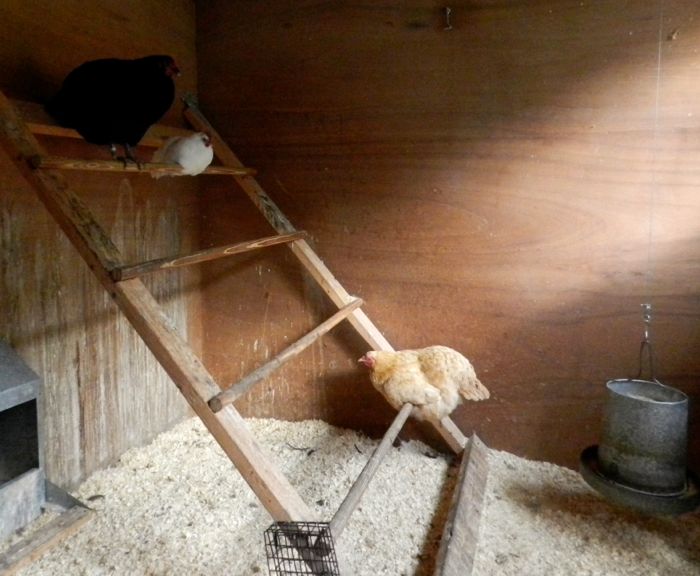
Eventually, as dusk falls, the pullets slow down. It might even look like they’re going to spend the night outside.

They won’t. Before it is too dark to see their way, but not a moment before, they’ll go find their places on the roost. (I had to turn on the light to take this photo.)
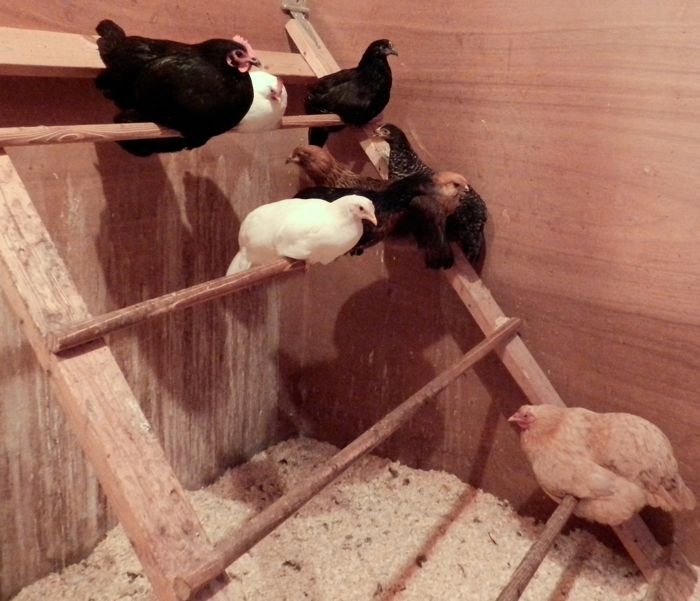
If your hens aren’t going inside to sleep, my guess is, that like me on that rainy night, you set the bedtime too early. Have a bit of patience and they’ll toddle off to sleep, inside, on their own.
If they are sleeping all night outside, ask yourself these questions:
1. Is it too dark in the coop for them to see the roosts? Chickens do not have night vision. They can’t see in the dark. If your coop doesn’t have windows, by the time they think about going inside, they can’t find their way. Some coops have ramps underneath the raised floors through which to enter the coop. Hens will get stuck there, in the dark, unable to see where to go.
2. Is the coop too hot? In extremely hot climates, it might have cooled off outside, but it hasn’t yet in the coop. A hen will not willingly walk into a stifling hot box.
3. Is there enough roost space so that the hens can choose their sleeping partners and jockey for roosting position?
4. Can your older hens get up to the roost? Buffy needs a low roost, but others want to be up high.
5. Is there good ventilation? Does the air smell fresh? Decomposing manure gives off ammonia. No one wants to sleep over the fumes.
6. If there’s a sudden change in your flock’s behavior and they refuse to go into the coop, perhaps there is a predator lurking.
7. Have your young chickens learned how to roost? Even if you didn’t teach them as chicks, they’ll naturally want to be up on a roost at night. Once in awhile, a young bird hasn’t figured that out. Three of my pullets stayed on the ground while the others found their places on the rungs. I gently picked them up and set them on a low roost. I did this for two days and by the third they were going up on their own.
8. If your hens are going inside, but sleeping in nesting boxes, read this.
9. Do you have free-ranging hens that prefer to sleep in trees? They will be taken by predators. They’ll need to be retrained.
For more about roosting, see the next post.
Rabbits do not have a bedtime. Unlike the hens, they see just fine in the dark, and like an evening romp.

But, Phoebe needs to be kept safe from predators, too I’ve been picking her up and carrying her to her hutch, where, like her predecessor, she gets a reward of one banana chip for being closed in for the night. Phoebe is beginning to catch onto the routine.

